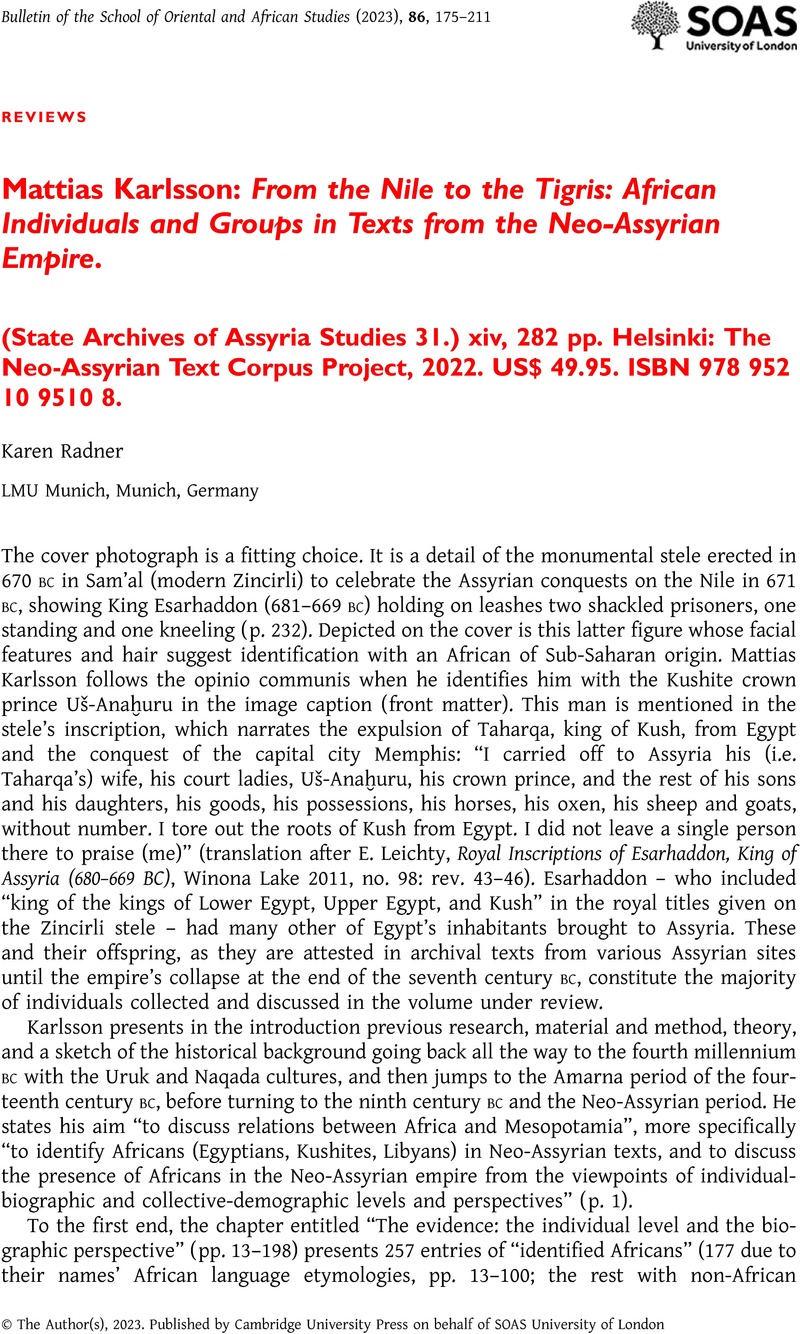No CrossRef data available.
Article contents
Mattias Karlsson: From the Nile to the Tigris: African Individuals and Groups in Texts from the Neo-Assyrian Empire. (State Archives of Assyria Studies 31.) xiv, 282 pp. Helsinki: The Neo-Assyrian Text Corpus Project, 2022. US$ 49.95. ISBN 978 952 10 9510 8.
Review products
Mattias Karlsson: From the Nile to the Tigris: African Individuals and Groups in Texts from the Neo-Assyrian Empire. (State Archives of Assyria Studies 31.) xiv, 282 pp. Helsinki: The Neo-Assyrian Text Corpus Project, 2022. US$ 49.95. ISBN 978 952 10 9510 8.
Published online by Cambridge University Press: 05 April 2023
Abstract
An abstract is not available for this content so a preview has been provided. Please use the Get access link above for information on how to access this content.

- Type
- Reviews
- Information
- Copyright
- Copyright © The Author(s), 2023. Published by Cambridge University Press on behalf of SOAS University of London



